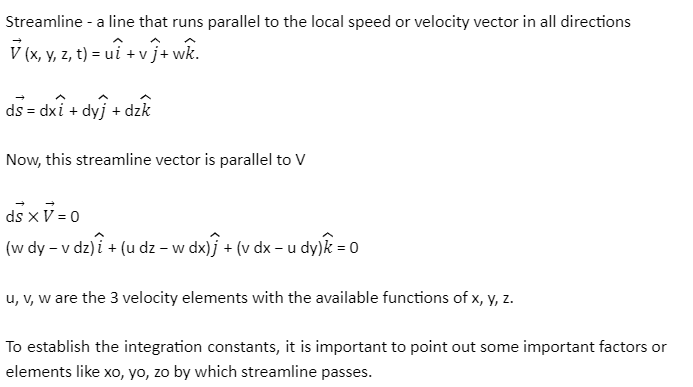Streamline is the path travelled by fluid particles under constant or steady flow. If the flow lines are represented as curves, the tangential at any point on the graph reveals the orientation of the fluid velocity at that moment. This sort of flow of liquid is otherwise called the steady-state flow. A streamline, or the steady-state flow, is a path or line drawn in a fluid field so that the tangential at each point of the line showcases the path of the fluid’s instantaneous velocity at that position.
What Are Streamlines?
Streamlines are paths or trajectories of fluid particles under steady flow conditions. It is the concept of fluid mechanics in physics that tells the path of fluid particles. In a constant stream, the liquid is moving, yet the streamlines are fixed. Where streamlines swarm together, the liquid speed is generally high; the liquid is moderately still when they open out. A streamline is a path perpendicular to the direction of instantaneous velocity. Streamlines mainly work in the laminar flow instead of turbulent flow because laminar flow creates constant motion.
To understand this, let’s look at one activity observed by the physicians. If scientists marked a water droplet with dye or fluorescent, that droplet was illuminated by a laser. If someone took a photo during the movement of a droplet, they would see that there is a short streak with length V\Delta t and with direction to instantaneous velocity direction. The streamlines in the flow will become evident if we mark numerous drops of water in this manner.
In a streamlined flow, the fluid particles are not dispersed or mixed. This type of flow is often used in engineering and physics to describe the motion of fluids. A streamlined flow is different from other types of fluid flows in a few ways. First, the fluid particles are not scattered or mixed. Secondly, the velocity or speed of the fluid slows down or remains constant. Finally, the direction of motion is always forward along a straight line.
How Does a Streamline Flow Affect Fluid Properties?
Streamline flow affects fluid properties in a few different ways. First, streamlined flow allows fluids to move in a straight line. This means that fluid particles move faster along the edge of the flow than in other flows. This is why streamlined flows are often used to describe the motion of liquids and gases.
Second, streamlined flow is less dispersed than other types of flows. This means that fluid particles move closer together than they would in other types of flows. This is why streamlined flows are often used to describe the movement of hot or dense fluids.
Finally, streamlined flow is less turbulent than other types of flows. This means that the fluid particles move more smoothly than they would in other types of flows. This is why streamlined flows are often used to describe the motion of fluids near walls or other boundaries.
Equation of streamline
Here in this section, let’s look at different forms of streamline equations:

For 2D, we get some values like dz = 0 & w = 0.
k is non-trivial, now the derived equation for streamlines are written as follows:
dy/dx = v/u
This is called the Ordinary Differential Equation (ODE) for streamlining the flow of any fluid. This equation is based on the trajectory drawn in the diagram.
Example of streamline flow
Fluid movements at slow speed or velocities are recognised as streamlining flow. it will depend on the tap opening. If you slightly open the tap, then the water flows slowly and smoothly and it shows its smooth texture. This is called streamlined flow. So the water flows in the pipes. Taps are the famous examples of streamlined flow .
The movement of spermatozoa and the movement of blood in veins are also some unique examples of streamlined flow.
A good example of a streamlined flow is the motion of water droplets in a river. Streamline flow is often used to describe the motion of fluids because it is easy to understand and is a good way to visualise the movement of fluids.
The first example of streamlining flow is the motion of hot gas through a nozzle. The second example is the movement of water through a pipe. The third example is the flow of air over an aeroplane wing.
Conclusion
A streamline is an important concept in fluid mechanics. It can be used to show the flow of a fluid, as well as to determine the velocity and direction of flow. In fluid mechanics, streamlining is the base concept for various other concepts like turbulent flow and many others. Streamlines definition, equations, and examples are completely explained in the above sections. By reading those concepts, you can easily unravel the concept behind the streamline.
 Profile
Profile Settings
Settings Refer your friends
Refer your friends Sign out
Sign out






